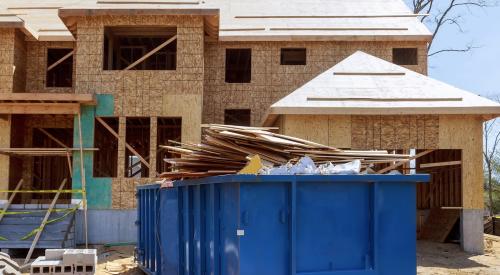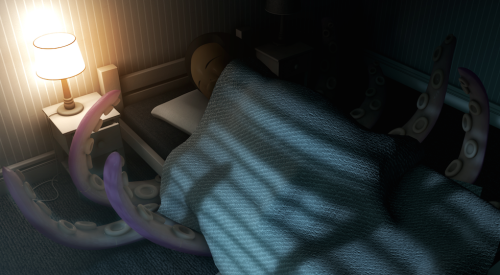Sales have slowed, price increases have ceased, labor and material costs remain high. To add insult to injury, mortgage interest rates have doubled. The result is a significant squeeze on home builder margins, especially compared with the sky-high profit levels of the COVID years. Understandably, builders of all types are looking for solutions—ideally big ones that will protect margins, even in the face of a pending economic recession.
As I’ve written in recent columns, there are incredible investments being made in new technology, with the potential to radically change the home building game. These advances come in the form of more capable software, greater off-site componentization, and entirely new types of homes. Yet, while desperately seeking new methods and technologies to add big dollars to builders’ pockets, we continue to miss the pennies, nickels, and dimes—at first glance, the small stuff—right in front of us that, when added up, can make a real difference in margins. Best of all, this money is available right now. No waiting, no hoping, no wishing.
When It Comes to Waste on the Jobsite, am I the Only One Who Hears the Music?
For example, while walking new homes with a builder team last month, we entered a house at the mechanicals stage, almost ready for insulation and then drywall. I gazed down at a vast array of wire trimmings on the floor. Everyone started to move on and, once again, as happens so often during my field walks, in my mind I heard Dionne Warwick’s signature tune, “Walk on By.” Am I the only one hearing the music? What they saw as trash, I saw as cash. Huge dollars.
I called the team back and explained that I can’t let them move on without recognizing this waste and calculating the true total cost. Before you read further, stop and consider: If you saw long cut-offs of wire all over your 2,500-square-foot house, how much money would it represent?
RELATED
- Home Builders, Stop the Waste!
- Reducing 3 Types of Construction Waste to Increase Home Builder Profit
- Advanced Framing for High Performance and Low Waste
Every Wednesday in our LeanBuilding Group on LinkedIn, I post a picture under the heading “Waste (NOT!) Wednesday.” It’s usually a depiction of waste, like the waste I saw on that field walk, and I ask, “What’s wrong with this picture?” Sometimes I post with the heading, “Style or Waste?” and let readers have it out. Every four or five weeks, I post something I like, something done well or efficiently, and I ask folks what they see.
Rather than present our findings immediately, I ask readers to do their analysis and share. The amazing thing is virtually every time, readers comment on what I saw, but they also point out things I missed. The discussions are highly educational and not everyone agrees, which provokes further debate—a good thing! For example, the initial responses to the wire photo included versions of, “Why are you wasting your time over $5 of material?” “Let the laborers pick this stuff up, it’s not worth the electrician’s time.” Oh really? Let’s do the math.
The average length of the cut-offs in this home was longer than 3 feet, with some exceeding four, and we found them in every room and hallway, even closets. Most of the wire was 14-2 with ground, but upon closer inspection, we found 14-3, 12-2, and even some 12-3. We counted the boxes in the house, including closet lights and switches, attic, garage, and exterior, totaling 204 for this 2,500-square-foot two-story unit over a basement. The average number of wires per box was better than two, conservatively. Some had just one, such as the termination for a single light or the end of an outlet run. Many, however, had three wires and a few had four. Just 6 to 8 inches of wire is needed in the box to make the connections. So, let’s take the low number and call it two trimmings of 2.5 feet each, or 5 feet per box; multiply that by 200 boxes and you get 1,000 total feet of wire! The team was shocked, even more so when we confirmed a 250-foot roll of 14-2 costs $135. Four rolls! We were staring at $540, not including tax.
A dollar is a dollar is a dollar, whether it initially lands on the builder’s, the supplier’s, or the trade’s books. Ultimately, it all comes through in house cost.
This builder will close just over 200 homes this year and acknowledged this is the common practice by local electricians. Again, we’ll be conservative, call it $500 per unit x 200 homes = $100,000. Yet, quick analysis by knowledgeable, educated people in our industry—after I’d given them the details—called it “five bucks.” Walk on by?
Instead, I suggest taking pictures of the waste and sending them to your electrical contractor. Better yet, bring the contractor on site before anyone cleans up and suggest that next time they need a price increase, they might first pick up this $500 per unit. And to anyone who asserts, “But the trade is paying for it,” don’t kid yourself. It’s in the contractor’s cost for each home, and he can’t keep losing $500 per unit without passing the cost along, or seriously hurting your business. In our Lean Process implementations, we continually remind participants: A dollar is a dollar is a dollar, whether it initially lands on the builder’s, the supplier’s, or the trade’s books. Ultimately, it all comes through in house cost.
Jobsite Waste Repeat Offenders
For the next “Waste (NOT!) Wednesday” post I dropped another example. This is one we’ve seen many, many times: a ton of excess hold-downs and tie-downs lying around a site inside and out. Just two weeks after the case of the wasted wire, I entered another house, this time with the framing 100% complete, and found a surplus of fasteners: I tallied 31 hurricane clips at just over a buck a piece, and 26 11 7/8-inch joist hangers at just under $5 each. Even worse were the 13 pre-deflected hold downs at $40 each! Add the cost of the nails for all three, plus an assortment of others, and you’re looking at more than $600. This builder closed just over 100 homes in 2022, so now you’re looking at $60,000. In this case, the builder is paying for the materials direct because all hangers and nails are sent out with the first lumber drop. Keep walking ... or not?

When we find instances of waste like this, whether excess hangers, nails, shingles, underlayment, wiring, or housewrap, often someone counters with, “Well, it gets picked up for credit,” or “It gets moved to the next house.” Yet, upon further investigation, this is almost never confirmed and, make no mistake, having suppliers pick up excess materials is an expensive way to do business. Once again, everyone was ready to just walk on by. But after finding multiple similar examples on their jobsites, you’ll not find them doing that in the future. If you haven’t figured it out yet, Step 1 is to get the take-offs right. Up front.
Items of Interest in Your Jobsite Dumpster? Take a Look
During my first month in home building, 34 years ago, I experienced the dumpster dive to end all dumpster dives led by Mike Rhoads, VP of construction for Pulte’s Chicago division. On a freezing Tuesday morning, he asked (ordered) all construction managers, project managers, superintendents, assistant superintendents, and warranty personnel—more than 30 people in all—to meet at a particular lot number on a project called “Elgin Green.” Our instructions were to dress warmly, wear boots and gloves, and to each bring a tape measure, calculator, and clipboard.
As we stood by an overflowing high-side dumpster, stamping our feet in the 15-degree cold, an empty waste management truck pulled up. Mike climbed up on the cab and gave the incredulous driver his instructions: The entire contents of the dumpster were to be spread over the vacant lots across from several homes under construction. Mike then broke us into teams and declared everything of value was to be recorded, measured, and costed, including any associated wasted labor. The number, when it was totaled back at the office, left everyone in shock.
RELATED
Ever since that day, I have become well known as a “dumpster diver” and I can’t walk by one on a building site without climbing up and peering in. Be honest now: when was the last time you or one of your field people did that? I’ll be generous and estimate perhaps 5% of your trash piles—whether in dumpsters, pens, or however you accumulate them—get thoroughly examined on a routine basis. In four out of five, you’ll find “items of interest,” such as a virtually intact roll of ice and water shield at $110, or $200 worth of insulated duct. I have literally hundreds of similar examples, and for each one the question arises: “Will you just walk on by?”
Just last week, on yet another field walk, I happened upon some drywall mud-filled electrical boxes—an all-too-common observance. No one noticed but me, or perhaps they noticed and didn’t think it warranted any comment. Mind you, I was with one of the best home builders I have ever worked with; a strong team that’s typically all over issues like this. I stopped them and we talked about it. Imagine you are the electrician. The house is painted, the carpet and flooring are in, and you’ve arrived to “trim-out” the switches, outlets, and receptacles. Not only do you have to carefully cut out the now hard-dried mud, you also have to clean it up as you go. If you found this in all of the 150 to 250 typical boxes in a house, it represents a huge time loss. Let’s go with 200 boxes and again, be conservative and estimate just 3 minutes extra time per box, including cleanup. (And remember, many of these will be done on a ladder.) That’s better than 5 hours’ time! If you have your own labor do it, it’s at least $200, all in. If it’s the electrician, better than $300. Now do the math again. Do we just walk on by?
Will you get a VPO from the electrician for the extra work? I hope so. But many of your best trades will also walk on by. They do what they must do and submit for “extras” on only about 10% of this nuisance work. Why do I say, “I hope so?” Because if the trade did ask for payment, it would wave a big red flag and the builder might actually do something about it. Well, the better builders would.
Looking to Save Your Margins? There's Money Just Lying Around
Much of this waste is obvious, like the examples presented here. Other waste is more subtle, perhaps, but a truly knowledgeable staff will catch it. And not all of the waste is in the field. Internal waste adds up as well. Find a 12' 2" x 12' 2" bedroom on a plan instead of 12' x 12'? That’s between $150 and $350 in drywall and carpet labor and material, and no customer will pay you for that. Each extra corner in a foundation costs anywhere from $150 on a single-story slab home to as much as $500 or more on a basement two-story. If you know what to look for and how to measure and cost it, you’ll find it highly unusual to discover less than $1,000 per unit in excess cripple, jack, and king studs, and oversized headers or headers where none are required. In so many homes, it’s common to identify over $3,000 in excess framing that adds nothing to the home’s quality.
Often in presentations I state emphatically, “Builders don’t really care about cost.” That gets everyone’s attention. Then I proceed with examples that inarguably demonstrate the thousands, even tens of thousands, of dollars left lying around. Meanwhile, we peruse articles, blogs, and LinkedIn posts hoping to find the “next big thing” to save our margins.
Whether inside or outside the home, internal to your company or as excess overhead among your suppliers and trades, the goal is to build a culture where no one just walks on by. They just wouldn’t think of it.
Today, every builder in America is feeling the margin squeeze as retail price increases stall, costs continue to rise, and interest rates price out would-be homebuyers. So stop, look, and challenge everything and everyone, including your architects, engineers, and lumber suppliers. Determine the true total cost of everything that doesn’t add value to your homes. And as we’ve seen here, never, ever skip the little things because they add up to a big load of cash. This week, while waiting for the next big thing to come along and save your margins, take some of your best out to the field and walk those homes with a critical, suspicious eye. And before you get out of your truck, ask Siri to play ‘Walk on By,’ by Dionne Warwick.














